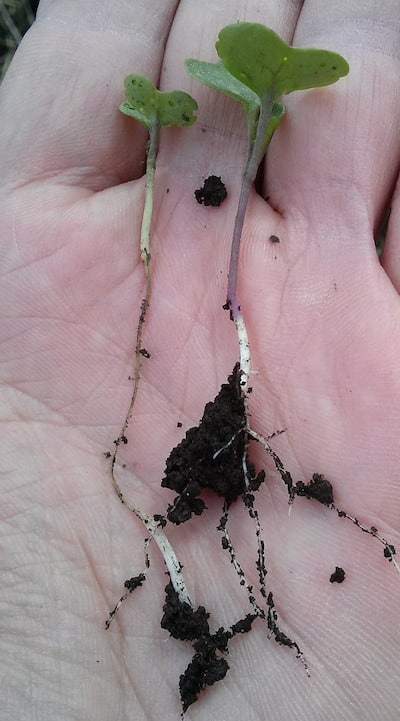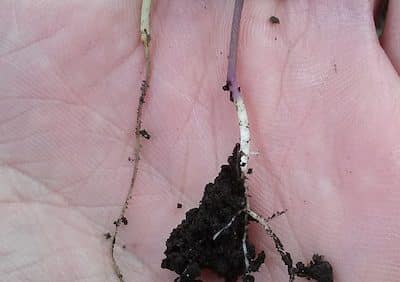
Canola seeded too deep is at higher risk of seedling diseases. Deep seeding requires a long hypocotyl for the plant to reach the soil surface, which exposes more of the plant to soil-borne disease pathogens. Deep seeding also extend the days to emergence, which means the plant is at its vulnerable stage for longer.
Other risk factors:
—Tight canola rotations increase the risk of seedling diseases, as those diseases common in canola have more host material and can build to higher levels in the soil.
—Slow plant development due to cool soil conditions will also increase the risk.
—Soil compaction.
The week after seeding is a good time to dig up seeds and seedlings to check for rots and blights. Disease damaged seed and seedlings die quickly, and may be gone within a few days, which is why this timing is important to an accurate diagnosis.
Seedling diseases caused by fusarium and pythium species tend to be worse in cool, wet conditions while rhizoctonia tends to be worse when canola emergence is delayed due to cool, dry conditions. Pythium tends to attack fine roots while rhizoctonia attacks the hypocotyl. The broad spectrum fungicide seed treatments used to treat certified seed typically provide good protection from these seedling diseases.
The tell-tale sign of disease is patchy emergence up to the four-leaf stage of the crop. Seeds or seedlings may decay prior to emergence or the seedlings may emerge and appear normal, then stagnate with yellow to purple discoloration at the two- to four-leaf stages. These plants will often die. Similar symptoms can result from cutworm or wireworm feeding.

